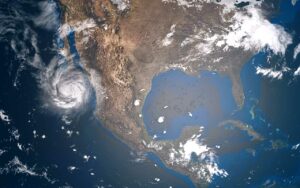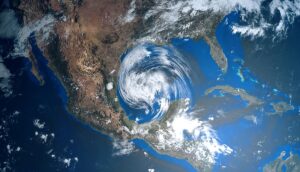Multiple solar storms erupted this week. At least two are headed toward Earth on Thursday-Friday, as NASA warns of “tech chaos” over satellite, radio, and power interruptions, Northern lights visible as far as the southern US.
Two solar storms will strike Earth on Thursday and Friday, potential “tech chaos”
This week, NASA has captured 17 solar flares, called coronal mass ejections (CME), that have erupted from the sun, two of which are headed toward Earth, where they will trigger a geomagnetic storm, The Sun reported.
The National Oceanic and Atmospheric Administration (NOAA) warned of possible effects on Earth through its space weather alert system.
The two storms are expected to arrive on Earth over the next two days. On Thursday, a strong G3-level (strong) storm will occur. On Friday, a G2-level (moderate) storm will occur.
The NOAA said the storms could trigger some intermittent problems with satellites, namely GPS functions, problems with high-frequency radio signals, and some bugs with power systems.
“Cannibal CME” and “solar tsunami”
Scientists are predicting that on Thursday, two solar flares are expected to merge into one, called a “cannibal CME,” and will create a more substantial disturbance in Earth’s magnetic field, the Washington Post reported. This week, scientists say another solar flare caused a “solar tsunami,” also known as an EIT wave, which creates a shockwave moving across the sun, as discovered using the EUV imaging telescope.
Geomagnetic storms use a 5-level rating scale. Earlier this week, on Monday, a solar flare caused a minor high-frequency radio blackout over Africa.
Northern lights could be visible as far as southern US, Southwest
In response to a solar flare, a strong geomagnetic G3-level storm, the so-called Northern lights, or aurora borealis, is forecast to extend over the northern tier of the United States on Thursday, WSLS reported.
Forecasters predict it is “most likely” reaching as far south as Nebraska and the Ohio Valley and over the Northwest, upper Midwest, Great Lakes area, and Northwest.
Forecasters say it is “possible” that the northern lights could extend as far south as northern New Mexico, North Texas. The northern regions of the South include most of Oklahoma and Arkansas, the northern areas of Mississippi, Alabama, Georgia, and South Carolina, including all the regions north of those locations.
To the west, the aurora borealis could also “possibly” be visible for Northern California, Utah, Colorado, and regions north.
In short, the northern lights could be visible across all of the US except for the deep southern areas.
How auroras form and get their color
Here’s a brief description of how auroras form and take on different colors as we view them on Earth.
The sun emits charged protons and electrons carried by solar wind. As they near the Earth, the particles follow Earth’s magnetic field. They enter the Earth’s atmosphere where the magnetic field is at its weakest – the North and South poles.
The electrons collide with various molecules in Earth’s atmosphere, and the resulting excitation of these collisions causes the various colors, which vary depending on the height and type of molecules that collide.
Collisions cause red auroras with oxygen molecules above 200 KM. Blue auroras are caused by collisions with nitrogen molecules at 100-200 KM and up. Green auroras are caused by collisions with oxygen molecules at 100-200 KM and up. Pink auroras are caused by collisions with nitrogen molecules below 100 KM.









